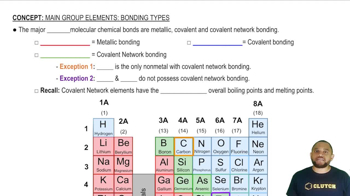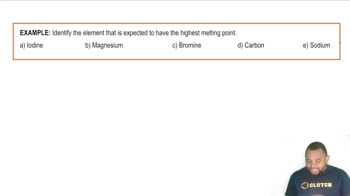Main Group Elements: Bonding Types definitions Flashcards
 Back
BackMain Group Elements: Bonding Types definitions
1/13
Terms in this set (13)
- Metallic BondingA type of chemical bond found in metals, characterized by a sea of shared electrons among a lattice of metal cations.
- Covalent BondingA chemical bond where nonmetals share electron pairs, forming molecules with specific shapes and properties.
- Covalent Network BondingA strong bond where atoms are connected in a continuous network, resulting in high melting and boiling points.
- NonmetalsElements typically forming covalent bonds, located on the right side of the periodic table.
- MetalsElements that exhibit metallic bonding, characterized by high electrical and thermal conductivity.
- MetalloidsElements with properties between metals and nonmetals, often forming covalent network bonds.
- CarbonA nonmetal capable of forming covalent network bonds, as seen in structures like diamond and graphite.
- Periodic TableA tabular arrangement of elements, highlighting periodic trends and bonding types among main group elements.
- TelluriumA metalloid that does not form covalent network bonds, unlike most other metalloids.
- AstatineA metalloid similar to tellurium, lacking covalent network bonding properties.
- Boiling PointThe temperature at which a substance transitions from liquid to gas, notably high in covalent network elements.
- Melting PointThe temperature at which a solid becomes a liquid, exceptionally high in covalent network bonded substances.
- Main Group ElementsElements in the s and p blocks of the periodic table, excluding transition metals, with diverse bonding types.


